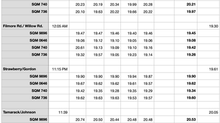Space Station Buzzes by Planets
- Chuck Bueter
- Apr 2, 2015
- 2 min read
No, the International Space Station (ISS) doesn't actually travel to the planets--the outpost is orbiting a couple hundred miles above earth--but on April 6 and 7 the ISS will appear to zoom by two planets as seen from the South Bend region. The second event on Tuesday connects with South Bend's sesquicentennial, too. You can follow the action of ISS and all visible satellites at Heavens-Above.com, with these images courtesy of Chris Peat. A new Heavens-Above feature, shown at right, gives the perspective from ISS, too. A live video feed from ISS includes "internal views when the crew is on-duty and Earth views at other times."
April 6
The ISS rises in the the southwest around 8:46 p.m. EDT. It peaks in brightness (mag.= -3.4) around 8:49:20 p.m., right when it is abreast Jupiter, which itself is brilliant (mag.= -2.3). Between the ISS and Jupiter is the Beehive Cluster, a tight group of stars also known as M 44 or Praesepe. If you scan the area with binoculars or a small telescope with a wide field of view, you may be able to catch the trifecta--planet, star cluster, spacecraft. Look for the four Galilean moons of Jupiter then, too. The ISS continues moving northeast until it disappears when it's over the St. Lawrence Seaway.




April 7
On Tuesday, April 7, the ISS rises in the west near blazingly bright Venus (mag.= -4.0) around 9:28 p.m. EDT. When the spacecraft is almost abreast the planet, nearby is another lovely star cluster, the Pleiades. At 9:30:20 p.m., if you hop from the ISS to Venus and that far again, you'll find that tight gathering of stars, also known as Subaru (check out the logo of the car company by the same name).
ISS then glides above the northern horizon as it heads to the northeast. But, wait, there's more...



Before the ISS heads out of sight near the northeast horizon it passes near Eltanin, the brightest star in the head of Draco the Dragon (though only mag.= 2.2) at 9:34:20 p.m. EDT. Eltanin is significant for it is South Bend's "birthday star" at about 150 light years away. The starlight that left Eltanin in 1865 when the city's founders were penning the documents of incorporation is just now--after traveling 186,000 miles per second--reaching our eyes in South Bend. For more information on the sesquicentennial sky see my First Midnight page.

Now, if only the weather cooperates...










































Commentaires